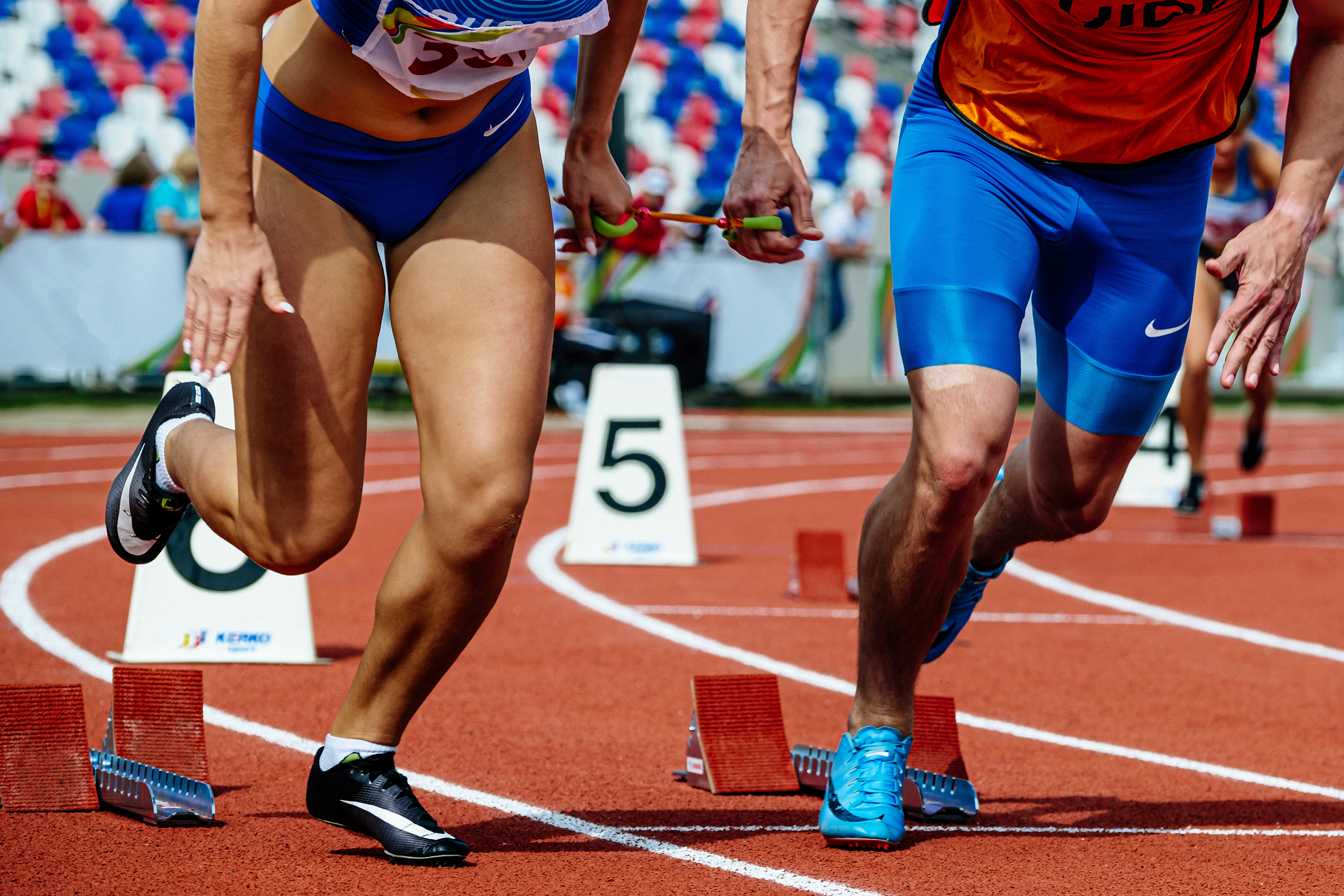Expert blog: Connection, togetherness and trust – the importance of the tether in guided running
By Marit Hiemstra, PhD researcher and guide runner in the School of Science and Technology
Published on 3 October 2024
Categories: Press office; Research; School of Science and Technology;

After successfully completing a 42.185 meter (26.22 miles) run on the final day of the Paralympic Games in Paris, Elena Congost, a Spanish runner with sight loss, and her guide, Mia Carol Bruguera, were on the verge of securing a bronze medal.
Just ten yards from the finish line, Bruguera was struck by severe cramping and struggled to continue running. In an intuitive gesture of support, Congost let go of the handheld tether that connected them and reached out to grab Bruguera’s hand to steady him.
Together, they crossed the finish line and celebrated their third place finish. But their joy was short-lived.
The Paralympic committee, adhering to the rules, disqualified Congost and Bruguera from receiving the bronze medal. According to the regulations, the athlete and guide must remain tethered at all times during the race. This rule is in place to prevent the guide from providing the athlete with any form of unfair advantage.
This decision, though technically correct, attracted worldwide attention and criticism, as this was clearly an act of compassion rather than a strategy to obtain advantage.
Such an incident invites us to take a closer look at the role of the tether in guided running – how it functions, what it symbolises, and why it is so integral to this sport.
Runners with sight loss and guides use a tether to communicate physically throughout their run. The tether is a short, rigid, non-elastic rope that both runner and guide hold, either in their hands or attached to their elbows, as they run side by side or behind each other.
The tether acts as a tool for non-verbal communication, especially when verbal cues are difficult or impractical, such as when the pace increases and it becomes more difficult to communicate verbally.
For example, a gentle pull on the tether can help the runners avoid hazards like puddles, manhole covers, or rough patches. Similarly, the tether can signal an upcoming turn, which allows the guide to communicate the sharpness of the turn without needing to speak. In this way, the tension in the tether provides enough haptic information for the runner to adjust their movements and navigate the route effectively.
Beyond its practical function, the tether symbolises something much deeper – a profound sense of connection, togetherness, and trust.
Running tethered is a collaborative effort, where both runner and guide are not only physically linked but also mentally, emotionally, and sensorially. It creates a true partnership which develops over time and over miles of running together.
As a guide runner myself, my own research explores the relationship between runners with sight loss and their sighted guides, and the ways in which they work together to create positive, productive and pleasant sporting experiences.
Through interviews and my own experience, many runners have mentioned the tether as key to the development of such successful partnerships– not only as a practical tool to communicate directions, but also as a means to establish a physical, mental and emotional connection between the runners.
In a previous paper, I described the feeling I had as a guide runner as ‘like we sense together; understand together. It is not that our sensations and understanding are ‘the sum of its parts,’ but it is ‘a whole’.
Congost later reflected on the disqualification in the Spanish sports newspaper Marca, saying:
“I would like everyone to know that I have not been disqualified for cheating, but rather I have been disqualified for being human and for an instinct that comes to you when someone is falling and needs help or support.”
She continued: “I’m devastated, to be honest, because I had the medal. I’m super proud of everything I’ve done.”
The incident involving Elena Congost and Mia Carol Bruguera underscores the intricate partnership between runners with sight loss and the guides.
Future research into this relationship may offer deeper insights into its social, emotional, psychological, and physical dimensions.
A more comprehensive and critical understanding of the athlete-guide partnership could offer more nuanced insights into the regulations governing guided running in (elite) competitions, as exemplified by the Congost-Bruguera case.